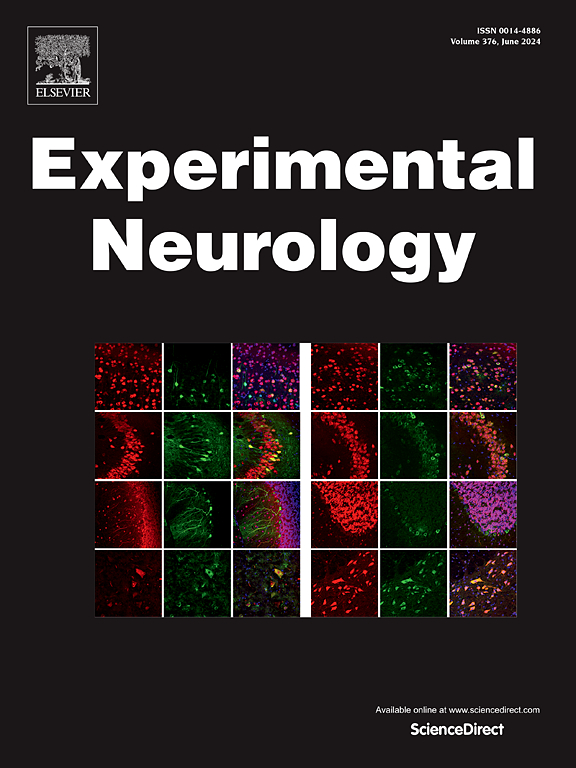TNF-α mediates activation of neuronal necroptotic signaling in rat with syringomyelia
IF 4.6
2区 医学
Q1 NEUROSCIENCES
引用次数: 0
Abstract
Syringomyelia is a severe and progressive disease characterized by fluid-filled cavities that form within the spinal cord, leading to progressive neurological deterioration. However, the molecular mechanisms that cause neuronal death and subsequent dysfunction remain incompletely understood. This study demonstrates that tumor necrosis factor-α (TNF-α)-mediated necroptosis plays a crucial role in neuronal death during syringomyelia progression. RNA-seq analysis revealed significantly elevated necroptosis scores at both 14 and 28 days after syrinx formation, with identified disease-related differentially expressed necroptosis genes primarily enriched in TNF-α-related signaling pathways. Through establishing a rat model of syringomyelia with central canal dilation, significant activation of necroptosis markers, phosphorylated receptor-interacting protein kinase 3 (p-RIPK3) and phosphorylated mixed lineage kinase domain-like protein (p-MLKL), was observed in the area surrounding the syrinx, with their expression predominantly localized to neurons. Concurrently, we found markedly elevated TNF-α levels around the syrinx, and primarily originating from reactive astrocytes (70.29 %). Upregulation of TNF receptor 1 (TNFR1) in perilesional neurons suggested enhanced sensitivity to TNF-α-mediated death signals. Subsequently, administration of the TNF-α inhibitor infliximab at day 14 post-modeling significantly alleviated the expression of necroptosis markers and attenuated the progression of sensory dysfunction at day 28, even in the presence of persistent syrinx. This study is the first to reveal TNF-α-mediated neuronal necroptosis as a crucial mechanism in neurological deterioration in syringomyelia, providing novel molecular targets for treatment. These findings suggest that targeting this pathway, particularly in combination with conventional surgical approaches, may offer therapeutic benefits for patients with syringomyelia.

求助全文
约1分钟内获得全文
求助全文
来源期刊

Experimental Neurology
医学-神经科学
CiteScore
10.10
自引率
3.80%
发文量
258
审稿时长
42 days
期刊介绍:
Experimental Neurology, a Journal of Neuroscience Research, publishes original research in neuroscience with a particular emphasis on novel findings in neural development, regeneration, plasticity and transplantation. The journal has focused on research concerning basic mechanisms underlying neurological disorders.
 求助内容:
求助内容: 应助结果提醒方式:
应助结果提醒方式:


